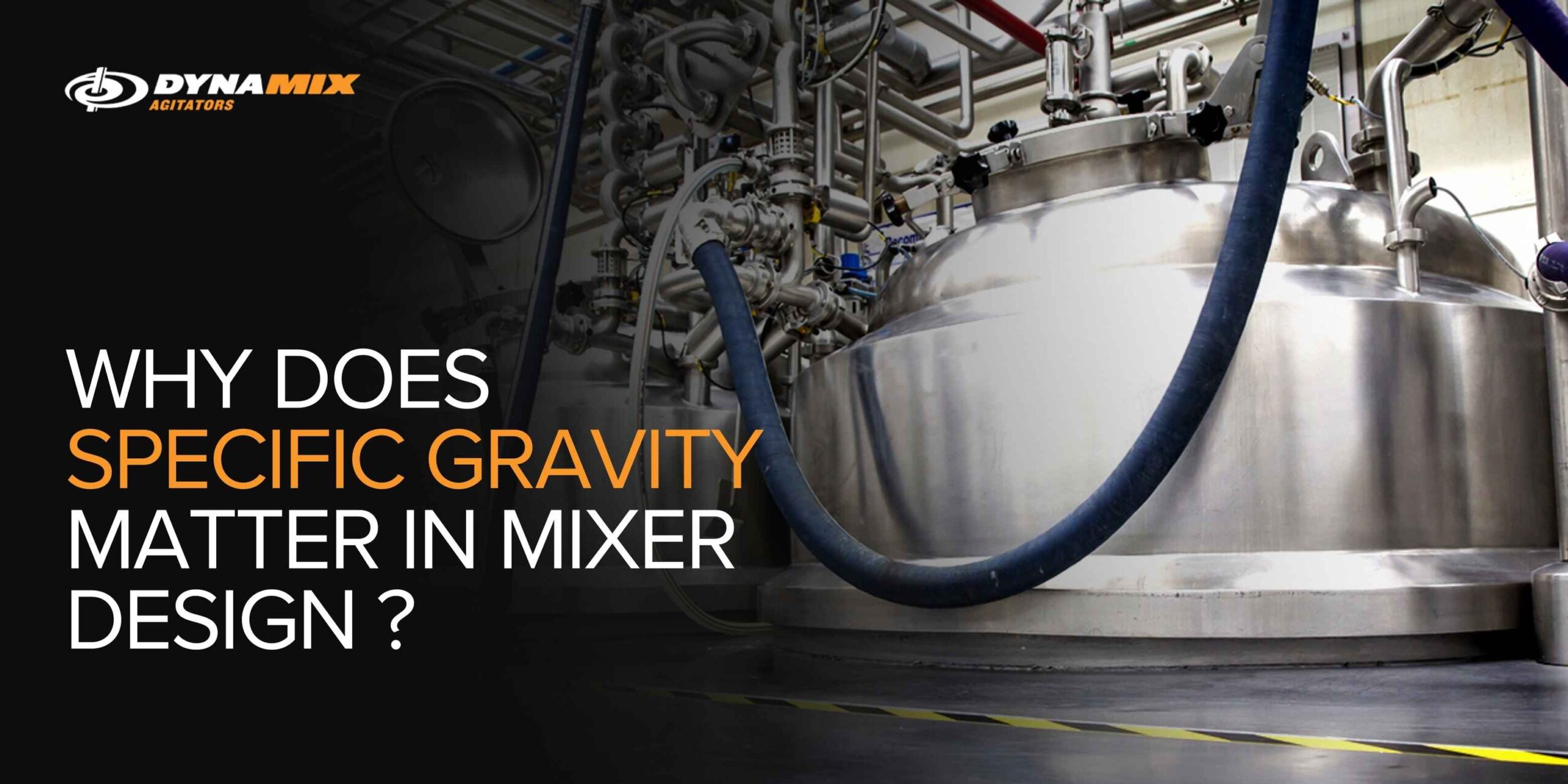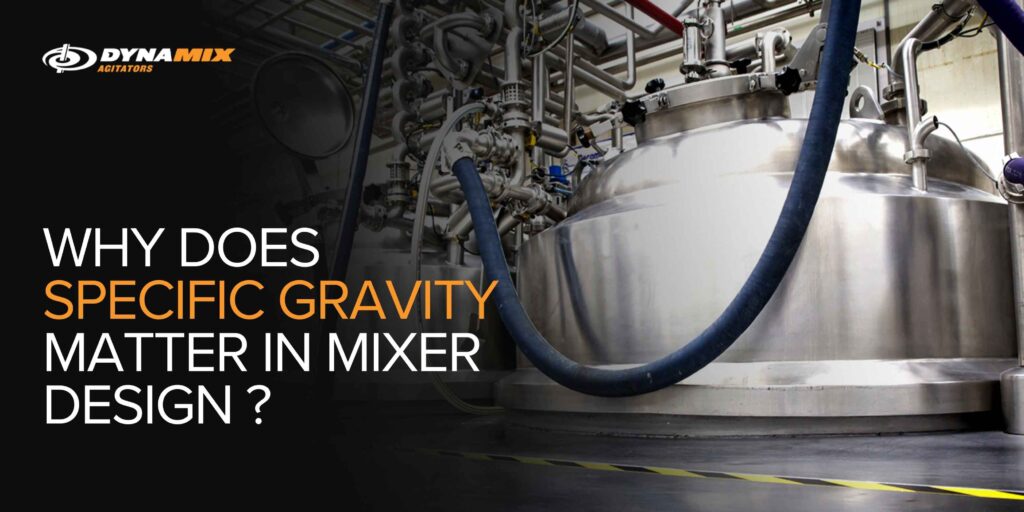
Environmental Factors To Consider When Designing a Mixer
Why Environment Matters in Mixer Designs In the industrial

What Is Specific Gravity and Why Is It Important in Mixing?
Specific gravity (SG) is a dimensionless measure that compares the density of a substance to the density of water. In mixer design, it plays a critical role because it directly influences the energy needed to mix a fluid and affects how fluid layers interact within a tank. Understanding SG helps engineers select the right mixer setup, including impeller type, size, and drive system.
Specific gravity is calculated as:
SG = _(P)fluid_
(P)water
Where:
(P)fluid is the fluid density (kg/m^3)
(P)water is typically 1,000 kg/m^3 at 4°C
A specific gravity greater than 1 means the fluid is denser than water. Many industrial fluids—like slurries, oils, and emulsions—fall into this category, requiring specialized mixing strategies.
Why SG is it important in Mixing?
A: It is commonly the reason mixing is required. In particular, it is the reason why many products or processes fall out of specification. If the product includes two or more immiscible fluids. Those fluids will have a tendency to Separate into layers. This is driven by Gravitational Force (downward) as well as the buoyant force (upward).
Net force difference causes fluid movement until a hydrostatic equilibrium is reached:
P = pgh
Where:
P = Pressure at a depth,
p = Fluid density
g = Gravitational acceleration
h = Height (or depth)
This equilibrium is the natural state of the fluids, and the reason mixing is required. The common term for this in industry is Separation, or Phase Separation. Separation is a large challenge for product and process control.
A simple example is Oil and Water.

The Role of Specific Gravity in Mixer Design
How Specific Gravity Interacts With Viscosity and Reynolds Number
While SG measures density, it often intersects with viscosity and Reynolds number in defining fluid behavior. Higher SG can reduce the Reynolds number, shifting flow from turbulent to laminar. In turn, this influences power number (Np) and mixing efficiency.
Use the following equations to evaluate system design:
Reynolds Number (Re) for Mixing:
Re = _pND2__
µ
Where:
p = fluid density (kg/m3)
N = impeller speed (rev/s)
D = impeller diameter (m)
µ = dynamic viscosity (Pa•s or kg/(m•s))
Correctly factoring in SG ensures accurate calculations for both mixing power and impeller performance.
Find insights and process strategies at Water Online and The Engineering Toolbox.
At Dynamix Agitators, every mixer is designed with SG as a core parameter. While viscosity is often the primary input, understanding SG in Solids and Liquid is critical. This ensures each customer receives a system that can handle the weight, flow dynamics, and startup torque associated with their specific application.
Customizations might include:
This level of engineering precision reflects the long-standing trust customers place in Dynamix for performance, reliability, and support.

Events and Resources to Deepen Knowledge
Keep up with the latest mixing technologies and SG-driven design practices by attending key industry events and leveraging technical platforms:
Conclusion: Specific Gravity Is More Than Just a Number
If you’re encountering challenges in your mixing process—or if this is the first time SG has been on your radar—give us a call. At Dynamix Agitators, we’re here to review your application, answer your questions, and recommend the right mixer solution for your specific needs. Let’s make sure your system is designed for real-world performance.

Why Environment Matters in Mixer Designs In the industrial

Understanding the Complexity of Non-Newtonian and High-Viscosity Fluid Mixing Mixing

Why Understanding Mixing System Design Is Crucial Industrial mixing
Subscribe to our newsletter for helpful technical publications and industry announcements.

This website uses cookies to ensure you get the best experience on our website